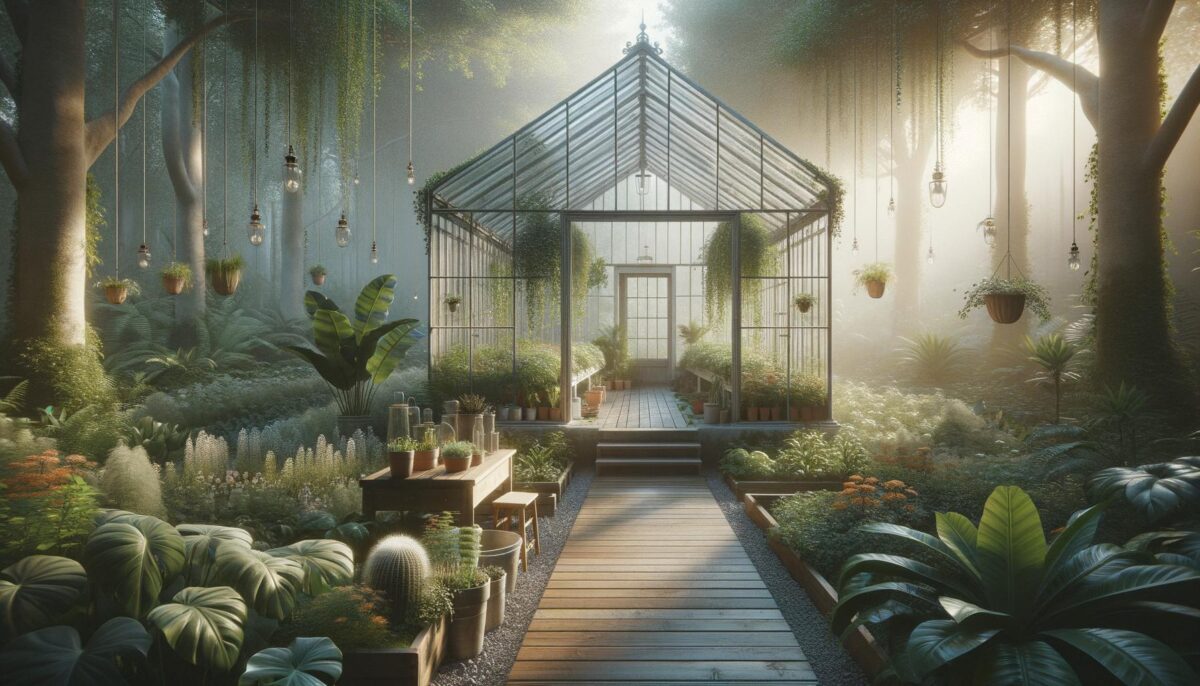The Purpose and Functionality of Greenhouses
Greenhouses are essential structures for gardening enthusiasts and commercial growers alike. These enclosed environments facilitate optimal growing conditions for various plants, extending their growing seasons and protecting them from adverse weather. Whether it’s the scorching heat of summer or the chilling winds of winter, a greenhouse serves as a barrier, maintaining an ideal climate for plant growth. The primary purpose of a greenhouse is to trap sunlight and convert it into heat. The structure’s walls and roof are typically made of transparent materials like glass or polycarbonate, allowing light to penetrate while providing insulation. This results in a warmer and more stable environment compared to the outside conditions, enabling plants to photosynthesize more effectively and grow at a faster pace.
The Advantages of Polycarbonate Greenhouses
When discussing greenhouses, it’s crucial to highlight the benefits of using polycarbonate glazing. This material is favored for its durability, lightweight properties, and excellent thermal insulation. Among the top advantages of a polycarbonate greenhouse is its ability to resist impact, making it a safer alternative to glass. This is especially beneficial in areas prone to hail or strong winds. Moreover, polycarbonate panels provide UV protection, reducing the harmful effects of UV radiation on plants. They diffuse sunlight evenly throughout the greenhouse, preventing hot spots and ensuring all plants receive adequate light. Many gardeners consider polycarbonate as one of the top options for greenhouse construction due to its efficient light diffusion and superior strength.
Considerations When Choosing a Greenhouse
Selecting the right greenhouse involves assessing several factors to align with your specific gardening goals. Here are some points to consider:
- Space and Location: Determine the available space in your garden and choose a location that receives optimal sunlight.
- Material: Decide between glass, polycarbonate, or film, considering factors like durability, insulation, and cost.
- Design: Evaluate different designs such as lean-to, freestanding, or mini greenhouses based on your needs and available space.
- Ventilation and Heating: Ensure adequate ventilation and consider heating options to maintain suitable temperatures.
By considering these aspects, you can choose a greenhouse that best meets your gardening requirements, ensuring plants thrive throughout the year.
Maintaining Optimal Conditions in Your Greenhouse
Maintaining a greenhouse requires regular monitoring and adjustments to create the most suitable environment for plant growth. Temperature control is crucial; installing vents, fans, or heaters may be necessary to regulate it. Equally important is humidity control, which can be managed through ventilation, misting systems, or dehumidifiers. Another key factor is pest management; employing natural pest control methods like introducing beneficial insects can help maintain a healthy balance. Regular cleaning of the structure and its components prevents the buildup of algae and mold, ensuring a clean and healthy environment for plants.
The Future of Sustainable Greenhouse Gardening
Greenhouse gardening is moving towards more sustainable practices, incorporating renewable energy sources and advanced technologies. Advanced greenhouses are being equipped with solar panels to utilize solar energy effectively, reducing dependency on non-renewable energy sources. Innovations like automated irrigation and climate control systems are becoming increasingly popular, allowing for precise management of growing conditions. These technologies not only enhance productivity but also reduce resource consumption, making greenhouse gardening a more sustainable practice.
Conclusion
In conclusion, greenhouses provide an invaluable solution for gardeners looking to extend growing seasons and cultivate plants in controlled conditions. Opting for a polycarbonate greenhouse can offer extraordinary benefits, balancing durability and functionality. Careful consideration of factors such as space, material, and design is essential when setting up a greenhouse. Maintaining optimal growing conditions through temperature, humidity, and pest control ensures healthy plant growth. As the industry embraces sustainable practices, greenhouses remain a worthwhile investment for both hobbyists and commercial growers seeking to maximize their yields while minimizing environmental impact.
